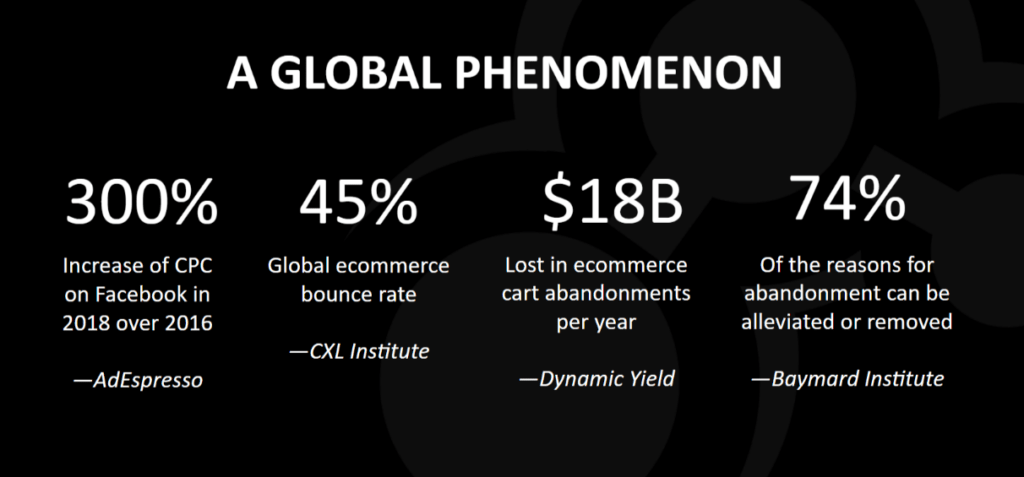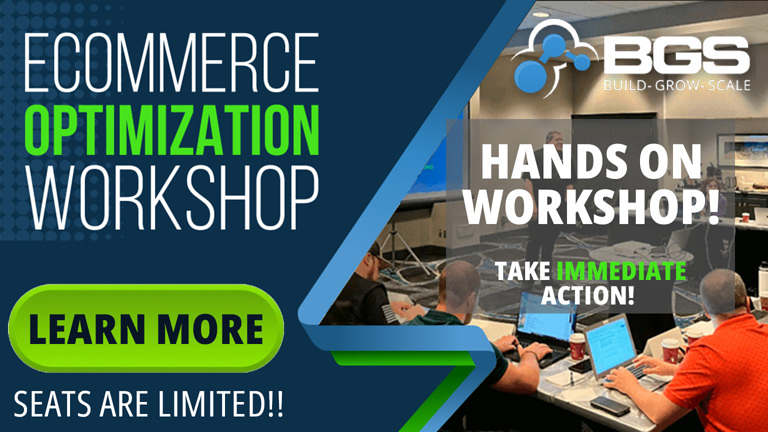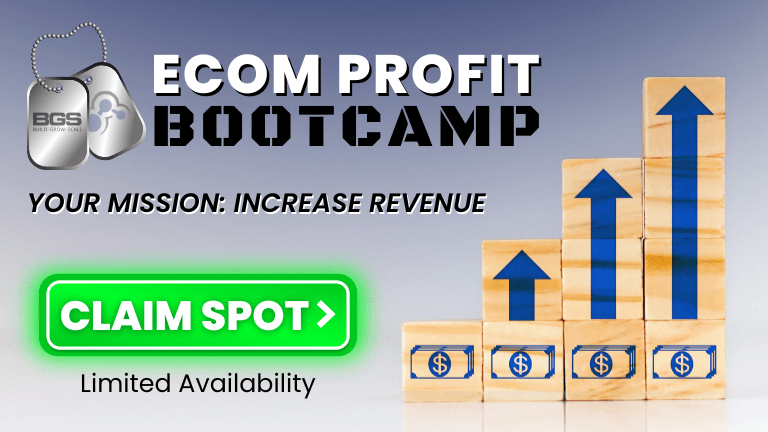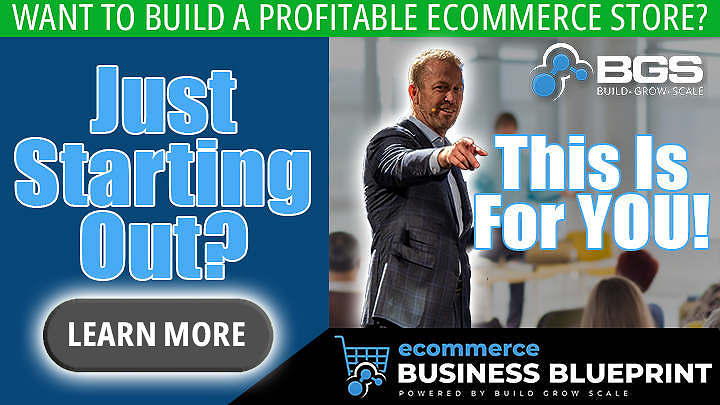Hey there, Aleks from Build Grow Scale here. I’m a Revenue Optimization™ expert and I help ecommerce businesses grow and scale through optimizing their store. In this article, we’re going to talk about the shift that’s happening (and changing everything) in the ecommerce industry … to which you’ll either adapt or perish. Keep reading to find out more.
When it comes to ecom, we’re living in an optimization economy. Things are shifting from trying to control traffic, to optimizing the customer journey of the traffic that’s already landing on your website in order to get the most out of it.
The Way Traffic Works Has Changed for Good
We no longer live in a traffic-focused economy because traffic doesn’t work even close to the way it used to, even compared to just a few years ago.
1. Broad Targeting
Advertising platforms, especially Facebook, now only allow broad targeting. Gone are the days of drilling down to the most specific interests of your customers.
And with the ever-increasing restrictions being imposed on data collection, not to mention new privacy laws popping up left and right, this will only get worse. Just look at what happened with ad performance after the iOS 14 and 15 updates. Facebook was chopped off at the knees and ad performance plummeted across the board.
2. Traffic Cost Increase
This should go without saying, but I’ll say it: Traffic doesn’t get cheaper … only more expensive. The more players that get into the game, the more expensive traffic becomes, and the broad targeting throws an extra wrench into the situation.
When you can’t laser-focus on your ideal customer, your traffic won’t convert as high, which in turn tells Facebook that your potential customers don’t want what you’re offering. When that happens, Facebook won’t optimize your ads as well and your cost per acquisition will go up. And again, this all got much worse after the iOS 14 and 15 updates, and it will only continue worsening in the future.
3. Traffic Source Increase
There’s no shortage of traffic sources. New traffic sources seem to be materializing daily, amongst a slew of new platforms, social media, and everything in-between. But, while traffic sources are increasing, our marketing budgets are staying the same.
With each additional traffic source, you use to drive traffic to your website, you stretch yourself thinner and thinner. Not only that, but you need to get really good at each one to get any kind of meaningfully positive results … and who has the time and energy for that? Check out some statistics of this global phenomenon below:

So, what’s the trend here? Traffic costs are skyrocketing, almost half of that traffic never even lands on your website, there are $18 billion in lost ecommerce sales per year, and 74% of the reasons for that loss could have been alleviated or removed.
Every Industry Is Shifting
The ecom industry isn’t the only one going through major changes. Consumer goods, high-tech education, cloud services, healthcare, IoT (Internet of Things), media communication … Leaders in all of these industries are creating new experiences through optimizing the customer journey.
The best companies have reinvented themselves away from trying to control traffic. So, what happened to the ones that didn’t?
Well, in the last 15 years, 52% of fortune 500 companies have disappeared. In 1955, the average life expectancy for a company was 75 years; in 2015, that number plunged to 15 years. That’s crazy!
And who survived this mass extinction? Companies like Amazon, Google, Apple, Facebook, Booking.com, Verizon, and Dell. These companies, and many more, invest a substantial number of resources into optimizing their website’s customer journey.
So, what’s the common thread? All of them understand that their customers desire an optimized shopping experience.

This means they’re looking for a website that meets the following criteria:
- Functional: bug-free; works as it should on all device/browser combinations
- Usable: allows an effective, efficient, and enjoyable shopping experience
- Intuitive: shopping experience flows the way they expect it to
- Clear: crystal clarity provided throughout the entire shopping journey
- Frictionless: flows smoothly; no obstacles; doesn’t make them work harder than they should have to to do or get what they need
A Completely New Way of Thinking

The new way of thinking requires a shift from trying to control traffic and get more visitors to a website with a broken shopping experience, hoping for sales (aka “the old way”) … to focusing on optimizing the customer journey of the traffic you already paid for before burning more money on traffic that will suboptimally convert.
Because here’s the truth: You cannot control traffic. You can’t control Facebook. You can’t control Google, YouTube, Instagram, or any other ad platform. But you can control your customers’ shopping experience on your website.
This way of thinking changes everything. When you focus on optimizing your site’s customer journey instead of trying to control traffic, the following will happen:
- Your conversions will go from low to high because you’re providing a better shopping experience.
- Your cost per acquisition will drop from high to low. When Facebook sees that your site is converting higher, they will optimize your ads better. Traffic now becomes easy because when your store is converting high and optimized, you don’t need to be a ninja at it. Even if you’re average at traffic, you’re going to get great results.
- Your growth will go from linear to exponential. When you optimize your store, all the different traffic sources you were running traffic from will now simultaneously convert better, which will result in exponential growth. This is how “hockey-stick growth” is achieved on an ecom store.
- Your Customer Lifetime Value (CLV) will go from low to high because customers that are shopping on an optimized website are happy customers and will return over and over again.
Old World vs. New World
Here’s the reality: In the old world, you needed to be amazing at Facebook ads, Instagram ads, Google ads, LinkedIn ads, Twitter ads, YouTube ads, Display ads, pay-per-click, paid search, sponsored content, influencer marketing, SEO, email, and the list goes on.
This is called “cross your fingers marketing.” You’re trying to control all these different platforms and traffic sources, and manipulate them to give you the type of customer you want.
In the new world, all you have to do is optimize your customer shopping experience and all your different traffic sources will simultaneously convert better, which will give you exponential growth, even if you’re average at traffic.
So, how do you do it? With focused Revenue OptimizationTM.
Revenue Optimization™
What is Revenue Optimization? It’s our proprietary system for optimizing your website, which creates long-term compound growth for your business by stacking on the optimization wins over time, no matter what niche or industry you’re in.
Revenue Optimization is the secret to our success, our clients’ success, and our students’ success.
If you want to learn more about Revenue Optimization, be sure to read my six-article series that talks all about it and how you can use it to optimize your website.





Reader Comments